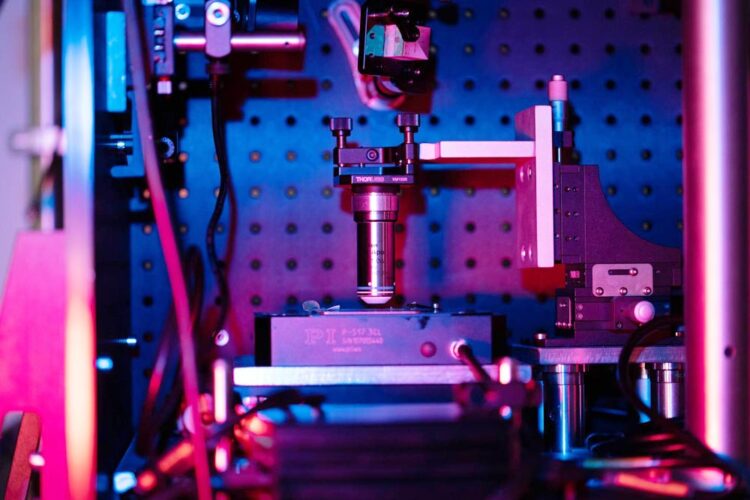A flash of light to identify tumors

Optical Microscope
Credit: Politecnico di Milano
The results of the VIBRA project of the Politecnico di Milano
Funded by ERC and just completed, the project uncovers the cellular mechanisms underlying various diseases thanks to a new optical microscopy technique.
The VIBRA project, “Very fast Imaging by Broadband coherent Raman”, has just ended at the Politecnico di Milano. Funded by the prestigious European Research Council of the European Community and lasted 5 years (2015-2020), it led to the development of a new revolutionary optical microscope in the biological and biomedical fields.
“Today, the identification of tumors and other diseases is largely based on the subjective judgment of a pathologist who visually inspects the tissue under a microscope. Our optical microscope, based on coherent Raman spectroscopy, is able to quickly visualize the chemical content of a biological sample to identify diseased cells in human biopsy – an accurate, reliable and non-invasive tool that can guide the surgeon’s work in real time”, explains Dario Polli, Professor of Physics at the Politecnico di Milano and scientific director of the project.
By exploiting sophisticated laser techniques that generate ultra-short light pulses (lasting millionths of millionths of a second, among the shortest events ever made by man), it was possible to record the fingerprint of the molecules that make up matter. Each molecule, in fact, is recognizable by the “sound” it emits when it vibrates. Hence the name of the project.
The laser pulses have the double function of hitting molecules like a hammer to make them vibrate and then recording their vibration, at frequencies billions of times higher than the sounds we can perceive with our ears. All this in a non-invasive way, that is, without adding any contrast agent or destroying or disturbing the sample.
It was therefore possible to map the concentration of the various constituents of matter and create detailed three-dimensional maps of cells and tissues.
“The results obtained will have a great impact in biology and medicine. In the future, they will allow researchers to visualize the properties of organic samples with great bio-chemical specificity. The aim will be to study the cellular mechanisms underlying various pathologies and to automatically identify tumors in biopsies, with a degree of accuracy and reproducibility better than we can do today”, comments Professor Dario Polli.
###
Link to the VIBRA project website: http://www.
Media Contact
All latest news from the category: Medical Engineering
The development of medical equipment, products and technical procedures is characterized by high research and development costs in a variety of fields related to the study of human medicine.
innovations-report provides informative and stimulating reports and articles on topics ranging from imaging processes, cell and tissue techniques, optical techniques, implants, orthopedic aids, clinical and medical office equipment, dialysis systems and x-ray/radiation monitoring devices to endoscopy, ultrasound, surgical techniques, and dental materials.
Newest articles

Pinpointing hydrogen isotopes in titanium hydride nanofilms
Although it is the smallest and lightest atom, hydrogen can have a big impact by infiltrating other materials and affecting their properties, such as superconductivity and metal-insulator-transitions. Now, researchers from…

A new way of entangling light and sound
For a wide variety of emerging quantum technologies, such as secure quantum communications and quantum computing, quantum entanglement is a prerequisite. Scientists at the Max-Planck-Institute for the Science of Light…

Telescope for NASA’s Roman Mission complete, delivered to Goddard
NASA’s Nancy Grace Roman Space Telescope is one giant step closer to unlocking the mysteries of the universe. The mission has now received its final major delivery: the Optical Telescope…



